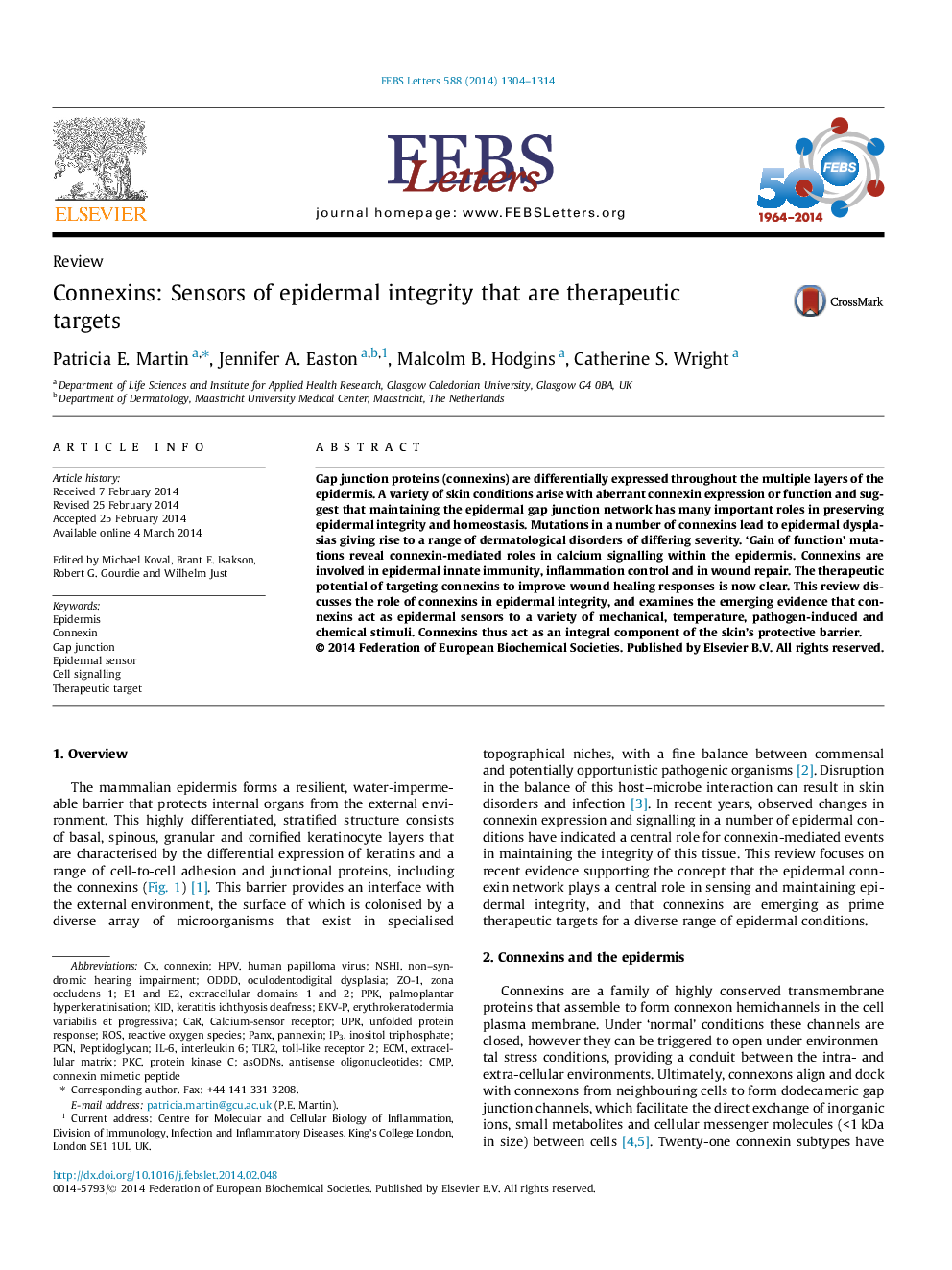| Article ID | Journal | Published Year | Pages | File Type |
|---|---|---|---|---|
| 10870686 | FEBS Letters | 2014 | 11 Pages |
Abstract
Gap junction proteins (connexins) are differentially expressed throughout the multiple layers of the epidermis. A variety of skin conditions arise with aberrant connexin expression or function and suggest that maintaining the epidermal gap junction network has many important roles in preserving epidermal integrity and homeostasis. Mutations in a number of connexins lead to epidermal dysplasias giving rise to a range of dermatological disorders of differing severity. 'Gain of function' mutations reveal connexin-mediated roles in calcium signalling within the epidermis. Connexins are involved in epidermal innate immunity, inflammation control and in wound repair. The therapeutic potential of targeting connexins to improve wound healing responses is now clear. This review discusses the role of connexins in epidermal integrity, and examines the emerging evidence that connexins act as epidermal sensors to a variety of mechanical, temperature, pathogen-induced and chemical stimuli. Connexins thus act as an integral component of the skin's protective barrier.
Keywords
ECMZO-1PPKinositol triphosphatePKCUPRPGNTLR2IP3E1 and E2CMPOculodentodigital dysplasiaIL-6ODDDAntisense oligonucleotidesROSEpidermisinterleukin 6KidCell signallinggap junctionExtracellular matrixCARZona occludens 1Therapeutic targetHuman papilloma virusHPVUnfolded protein responsePanxpannexinProtein kinase CPeptidoglycanconnexinReactive oxygen speciesToll-like receptor 2
Related Topics
Life Sciences
Agricultural and Biological Sciences
Plant Science
Authors
Patricia E. Martin, Jennifer A. Easton, Malcolm B. Hodgins, Catherine S. Wright,
